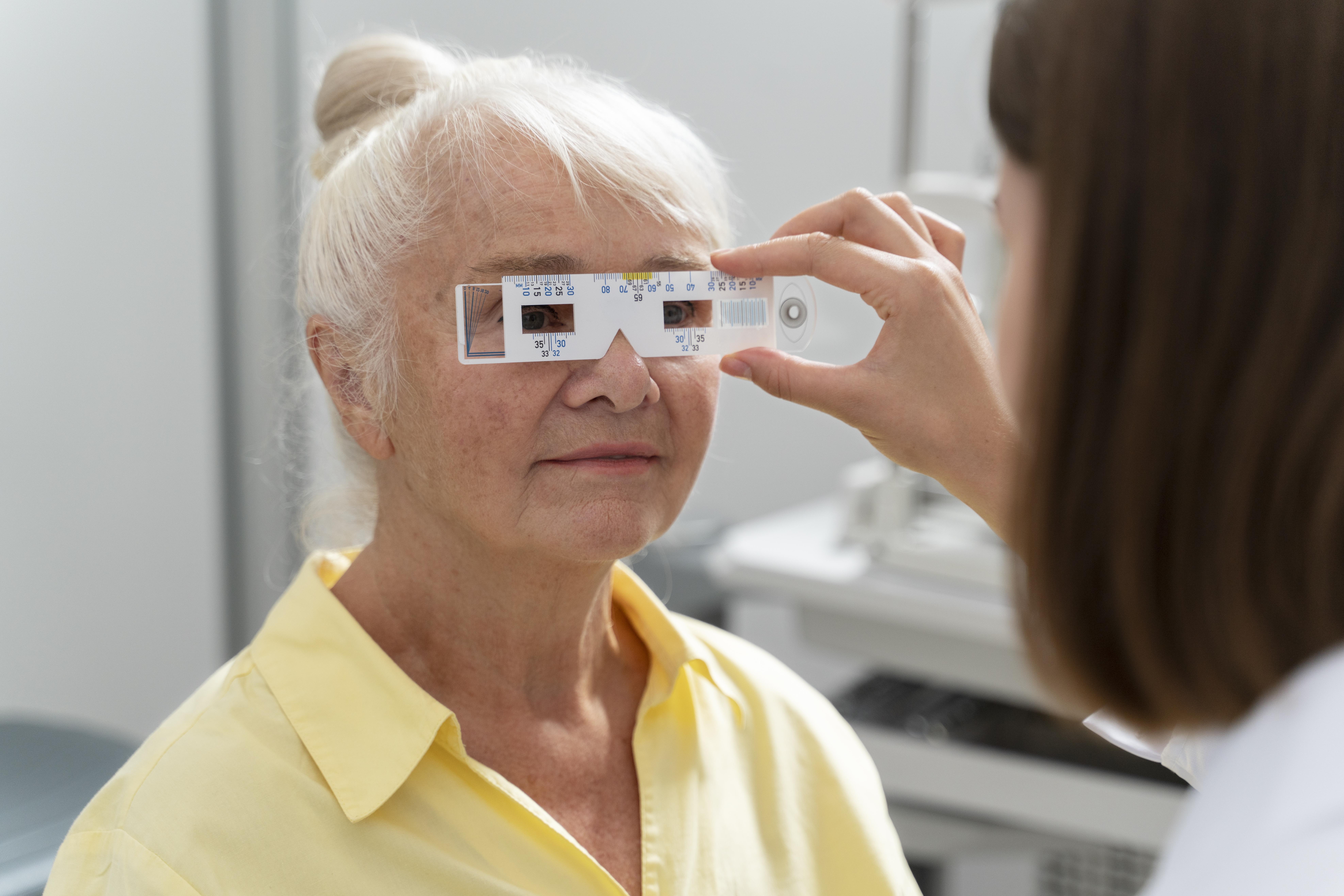Recognizing the Various Vision Adjustment Procedures Available for Clearer Sight
In the world of vision modification procedures, a plethora of alternatives exist to deal with refractive errors and provide individuals with clearer view. Allow's explore the complexities of these treatments and shed light on the course to achieving boosted vision clearness.
LASIK Surgery
LASIK surgical treatment is an usual refractive treatment utilized to correct vision issues such as astigmatism, nearsightedness, and farsightedness - eyecare near me. This medical strategy, which means Laser-Assisted in Situ Keratomileusis, aims to improve the cornea to improve how light is focused on the retina, inevitably improving vision clarity. During the procedure, a thin flap is developed on the cornea, and a laser is utilized to eliminate exact quantities of tissue to improve it appropriately. This reshaping enables light to be precisely focused onto the retina, dealing with refractive mistakes.
Among the key advantages of LASIK surgical treatment is the fast improvement in vision experienced by people. Many individuals observe a significant improvement in their vision promptly after the treatment. Furthermore, a lot of patients report very little discomfort and pain throughout the surgical procedure and healing duration. The recuperation time for LASIK is relatively quick, with numerous individuals returning to their everyday tasks within a day or 2 post-operation. Generally, LASIK surgery is a prominent choice for people seeking a long-lasting option for their vision troubles.
PRK Treatment
While also a common refractive procedure, the PRK (Photorefractive Keratectomy) method differs from LASIK surgical procedure in its technique to correcting vision problems. In PRK, as opposed to creating a flap on the cornea, the external layer of the cornea, called the epithelium, is completely gotten rid of. This allows the laser to improve the cornea to fix refractive errors such as astigmatism, nearsightedness, and farsightedness straight on the surface.

Despite the longer healing time, PRK can yield outstanding results in vision renovation, making it a valuable option for those who may not be ideal candidates for LASIK surgery.
Implantable Lenses
As opposed to PRK where the cornea is reshaped directly, implantable lenses offer another approach for remedying vision by inserting fabricated lenses inside the eye. This treatment is especially helpful for people with high levels of nearsightedness, astigmatism, or farsightedness who might not appropriate candidates for laser surgical procedures like LASIK or PRK.
Implantable lenses, likewise called phakic intraocular lenses, work by supplementing the eye's all-natural lens with a man-made one. eyecare near me. These lenses can be placed in front of the natural lens (former chamber) or behind the iris and before the natural lens (posterior chamber) By adjusting the power and positioning of these lenses, eye doctors can properly correct refractive mistakes and boost visual acuity
One benefit of implantable lenses is that they are detachable and exchangeable, offering flexibility for future changes. As with any type of medical procedure, there are dangers included, such as infection or cataract formation. People thinking about implantable lenses ought to seek advice from with an eye care professional to establish one of the most ideal alternative based on their specific requirements and eye health and wellness.
Corneal Rings
Corneal rings, additionally known as intracorneal ring segments, are little, transparent tools placed right into the cornea browse around here to correct vision distortions such as keratoconus. Keratoconus is a condition where the cornea thins and bulges outside, causing vision to become altered. The insertion of corneal rings assists to flatten the cornea, boosting visual skill and lowering the uneven astigmatism brought on by keratoconus.
The treatment for placing corneal rings is relatively quick and minimally intrusive, usually executed as an outpatient procedure. Throughout the surgery, the eye doctor makes a small cut in the cornea and inserts the rings at a particular depth. When in place, the rings aid to reshape the cornea, supplying a smoother surface for light to go into the eye, which can result in clearer vision.
Corneal rings are thought about a reversible procedure, as they can be gotten rid of or changed if needed. eyecare near me. While they may not completely get rid of the need for glasses or contact lenses, corneal rings can substantially improve vision quality and total aesthetic comfort for individuals with keratoconus or various other corneal irregularities
Refractive Lens Exchange
Complying with the modification of corneal abnormalities with procedures like corneal rings, an additional vision correction method that can attend to refractive mistakes is Refractive Lens Exchange (RLE) RLE is a procedure that entails replacing the eye's all-natural lens with an artificial intraocular lens (IOL) to remedy refractive errors such as nearsightedness, farsightedness, and presbyopia. This treatment is specifically helpful for people who might not be appropriate candidates for procedures like LASIK or PRK because of factors such as slim corneas or high refractive mistakes.

Final Thought
In final thought, there are numerous vision improvement treatments readily available to assist individuals achieve more clear sight. LASIK surgery, PRK treatment, implantable lenses, corneal rings, and refractive lens exchange are all options that can address different vision concerns.
In the realm of vision correction treatments, a wide range of options exist to address refractive mistakes and offer people with clearer sight.LASIK surgery is a typical refractive procedure utilized to deal with vision troubles such as nearsightedness, farsightedness, and astigmatism.While additionally a common refractive treatment, the PRK (Photorefractive this hyperlink Keratectomy) technique varies from LASIK surgery in its method to correcting vision troubles.Complying with the correction of corneal abnormalities with procedures like corneal rings, an additional vision correction strategy that can resolve refractive errors is Refractive Lens Exchange (RLE) LASIK surgical procedure, PRK treatment, implantable lenses, corneal rings, and refractive lens exchange are all choices that can resolve various vision concerns.